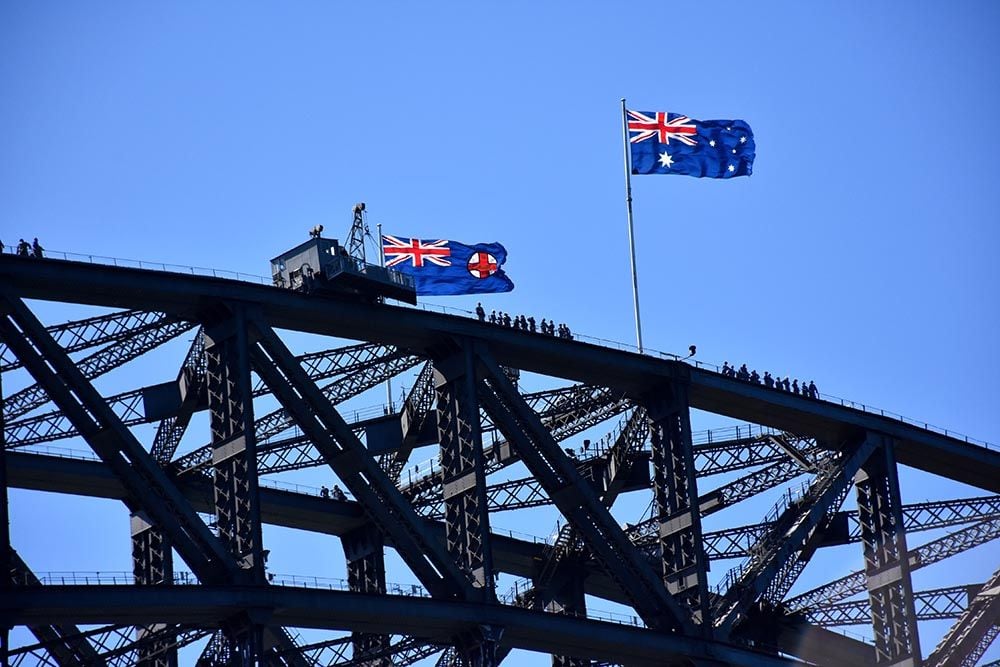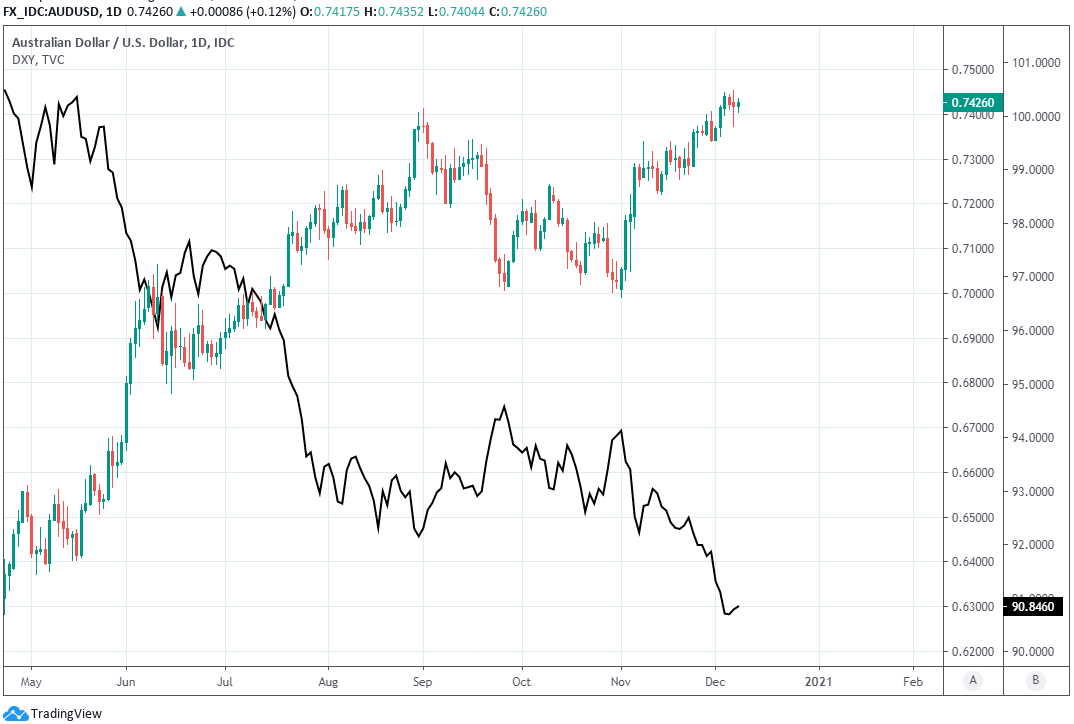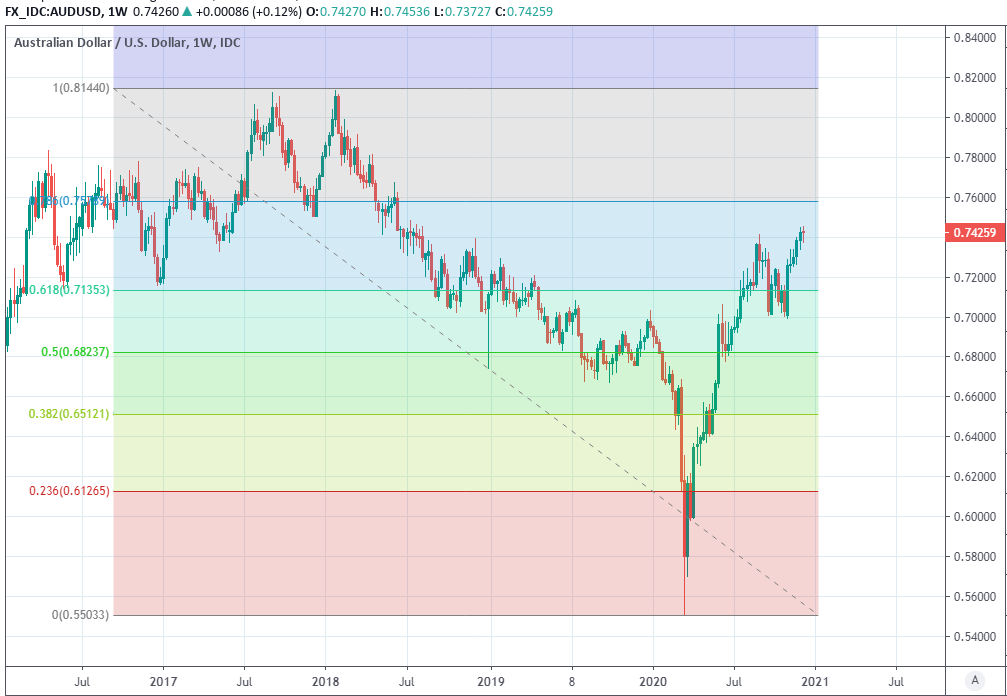Australian Dollar Limited by Risks in Europe, Festering China Trade Threat
- Written by: James Skinner
-

Image © Adobe Images
- GBP/AUD spot rate at time of writing: 1.7964
- Bank transfer rate (indicative guide): 1.7334-1.7460
- FX specialist providers (indicative guide): 1.7694-1.7837
- More information on FX specialist rates here
The Australian Dollar was on the offensive Tuesday but remained below last week's highs, which are tipped by Westpac to keep the antipodean unit contained over the coming days as European troubles support the U.S. Dollar and the risk of another trade spat with China rises steadily in the background.
Australian Dollars were bought widely with only the Canadian Loonie able to outpace the antipodean currency on Tuesday although the AUD/USD rate is said to have only limited upside in the short-term due to risks emanating from the European continent.
Investor unease over the outcome of the Brexit Saga and risks associated with Thursday's European Central Bank (ECB) meeting have kept the Pound and Euro on the back foot early this week which, in turn, has kept the U.S. Dollar Index from falling to new lows.
Australia's Dollar has a negative correlation with the U.S. Dollar Index, which is two thirds comprised of the Pound and Euro, so post 2019 lows for the greenback are also post-2018 highs and a short-term ceiling for the Aussie.
"The commodity story remains super supportive with the 62% iron ore index up $16 since the end of October and at highs back to Feb 2013. However, with Brexit constraining GBP, risks around the ECB/ EU summit constraining EUR, it’s not obvious that we have much upside beyond 0.7450," says Richard Franulovich, head of FX strategy at Westpac. "I would also argue that trade risks with China are under-priced."
The Aussie has enjoyed a stellar run in recent months as the U.S. election and more recent advent of coronavirus vaccines bolstered expectations for a global economic recovery next year, which was felt first and foremost by commodity prices and currencies as well as others like the Euro, which is among the most exposed to any recovery in global trade.
Above: AUD/USD shown at daily intervals with U.S. Dollar Index (black line).
But with the final chapter in Britain's Brexit saga dealing a setback to Pound Sterling this week, while Thursday's eagerly-anticipated European Central Bank (ECB) and EU leaders' meetings keep the Euro in the check, the U.S. Dollar has bounced tenatively this week and could further limit the Australian Dollar's scope for upside over the coming days.
Ongoing Brexit talks and Thursday's meetings of the European Council and European Central Bank are crucial to the outlook for both currencies.
"Sterling continues to trade in a volatile manner amidst increasing nervousness about a no-deal Brexit. GBP/USD is currently trading almost two cents off its high on Friday and GBP/EUR has broken south of its ascending trend channel. Meanwhile, UK PM Boris Johnson travels to Brussels to try and break the deadlock and clinch a last-minute deal," says George Vessey, a currency strategist at Western Union Business Solutions. "Additional monetary stimulus may trigger traders to reduce their current bullish bets on the Euro in the lead up to the meeting this week. Investors are also conscious that the aggressive upswing of the Euro over recent months might influence the central bank to talk the currency down due to the deflationary nature of such circumstances."
{wbamp-hide start} {wbamp-hide end}{wbamp-show start}{wbamp-show end}
Any failure by UK and EU leaders to agree a Brexit trade deal could weigh on Sterling and the Euro as well as, by virtue of correlation, the Australian Dollar too. In addition, an ongoing row over the EU's budget, which could be vetoed this week by Poland and Hungary, is also a risk to appetite for the Euro because without national leaders' unanimous endorsement the seven-year spending plan cannot be implemented. The result would be a partial Brussels shutdown.
"AUD/USD’s recent high was not confirmed by the daily RSI and we may see some near term consolidation. Initial support is offered by.7344 the 20 day ma ahead of .7255, the November 19 low, and the 55 day moving average at .7211," says Karen Jones, head of technical analysis for currencies, commodities and bonds at Commerzbank. "Beyond this, we look for a move to the long term Fibonacci retracements at .7574 and .7639. These are the break points longer term for the 2018 peak at .8135."
Jones and the Commerzbank team have a bullish one-to-three month outlook for the Australian Dollar, which they see having scope to return to its January 2018 high in the region of 0.8135, but are first expecting a period of consolidation that could see the exchange rate weaken as far as 0.7211.
Above: AUD/USD shown at weekly intervals with Fibonacci retracements of 2018 downtrend.
Commerzbank advocated this week that clients bet on a short-term Australian Dollar decline from 0.7450 against the U.S. Dollar.
European problems and technical factors on the charts are expected to govern Australian Dollar price action this week although in the background other risks are building again, most notably in relation to Australia's trade relationship with China following Canberra's approval of the Foreign Relations State and Territory Arrangement bill last week, which gives the federal government the power to veto state level agreements with foreign governments.
The new powers are widely expected to be used to nullify a 'Belt and Road' investment agreement between Victoria state and China, which has been a source of domestic political controversy in Australia, although their passing and eventual use will be coming at a time when trade relations are already strained. China has increasingly targeted Australian export industries with mainly non-tariff trade attacks ever since Prime Minister Scott Morrison called for an investigation into Beijing's handling of the coronavirus.
Tensions had ebbed earlier this week when it was reported that China had allowed a cargo of Australian coal to be brought ashore at one of its ports despite a widely reported but unacknowledged ban on imports of it from Australia. However, the danger is that an eventual deployment of the new powers by Canberra leads to other industries being targeted, potentially undermining appetite for the Australian Dollar.
"The trade tensions between China and Australia continue. The Chinese government confirmed the suspension of beef imports from another Australian abattoir. Despite the tensions with China, the Australian economy continues to rebound," says Joseph Capurso, a strategist at Commonwealth Bank of Australia. "AUD is still at the lower end of its fair value range in our view, and so can end the year above our current forecast of 0.74."







